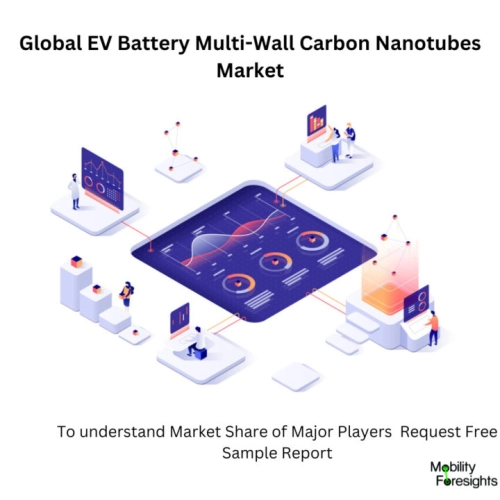
- Get in Touch with Us

Last Updated: Apr 25, 2025 | Study Period: 2023-2030
A single sheet of graphene may be rolled up several times around a hollow cylindrical tube to form a multi-wall carbon nanotube (MWCNT), which is made up of two or more nested single-wall carbon nanotubes that are joined together mostly by weak intermolecular interactions.
Because of their superior flexibility, outstanding electrical conductivity, and good chemical stability, carbon nanotubes (CNTs) with a distinctive 1D nanostructure have been specifically introduced to Li-S batteries as the intermediate layers.
CNTs are employed as conductive layers for the quickly expanding touch screen sector and are used to make transistors. In some applications, CNTs are thought to be a suitable replacement for ITO transparent conductors.
A pulsed laser is employed in a different technique called "laser ablation" to melt the carbon off a graphite object. When the vaporised carbon condenses, some of it turns into nanotubes, and the addition of metal catalyst particles improves its efficiency.

The global EV battery multi-wall carbon nanotubes market accounted for $XX Billion in 2022 and is anticipated to reach $XX Billion by 2030, registering a CAGR of XX% from 2023 to 2030.
Together with OCSiAl, a global pioneer in the manufacture of graphene nanotubes, Genius, a top Chinese business in engineering plastics and innovative composite materials, has created an advanced engineering solution for battery packs.
They use polyphenylene sulphide (PPS) packed with reinforced glass fibres and replace 10% of the conductive carbon black with 0.3 wt% graphene nanotubes. After injection moulding, the finished parts exhibit surface resistivity of 103 Ohm/sq and fully satisfy the high battery specification.
Traditional additives used in thermoplastics have a number of disadvantages that increase the amount of parts that are manufactured outside of specifications and force manufacturers to reduce performance standards.
For example, carbon black cannot provide stable and homogenous electrical conductivity, and carbon fibre cannot provide the desired low resistivity.
"Unlike typical additives, high glass filled PPS can maintain its exceptional chemical and thermal performance, including its dimensional stability at ambient temperatures, when graphene nanotubes are applied at an extremely low effective concentration.
Additionally, they maintain the necessary MFI level and impact viscosity, resulting in acceptable injectability, which is difficult to achieve with multi-wall carbon nanotubes, according to the managing director of sales and commercial for greater China & SEA, OCSiAl Group.
TUBALLTM MATRIX, a pre-dispersed nanotube concentrate that is simple to handle, offers excellent processability and the opportunity to add additional useful ingredients.
The battery pack's strong performance, colour retention, good surface quality, permanent homogeneous resistivity without "hot spots," and reduced assembly costs increase the battery enclosures' affordability, safety, compliance, and durability.
| Sl no | Topic |
| 1 | Market Segmentation |
| 2 | Scope of the report |
| 3 | Abbreviations |
| 4 | Research Methodology |
| 5 | Executive Summary |
| 6 | Introduction |
| 7 | Insights from Industry stakeholders |
| 8 | Cost breakdown of Product by sub-components and average profit margin |
| 9 | Disruptive innovation in the Industry |
| 10 | Technology trends in the Industry |
| 11 | Consumer trends in the industry |
| 12 | Recent Production Milestones |
| 13 | Component Manufacturing in US, EU and China |
| 14 | COVID-19 impact on overall market |
| 15 | COVID-19 impact on Production of components |
| 16 | COVID-19 impact on Point of sale |
| 17 | Market Segmentation, Dynamics and Forecast by Geography, 2023-2030 |
| 18 | Market Segmentation, Dynamics and Forecast by Product Type, 2023-2030 |
| 19 | Market Segmentation, Dynamics and Forecast by Application, 2023-2030 |
| 20 | Market Segmentation, Dynamics and Forecast by End use, 2023-2030 |
| 21 | Product installation rate by OEM, 2023 |
| 22 | Incline/Decline in Average B-2-B selling price in past 5 years |
| 23 | Competition from substitute products |
| 24 | Gross margin and average profitability of suppliers |
| 25 | New product development in past 12 months |
| 26 | M&A in past 12 months |
| 27 | Growth strategy of leading players |
| 28 | Market share of vendors, 2023 |
| 29 | Company Profiles |
| 30 | Unmet needs and opportunity for new suppliers |
| 31 | Conclusion |
| 32 | Appendix |